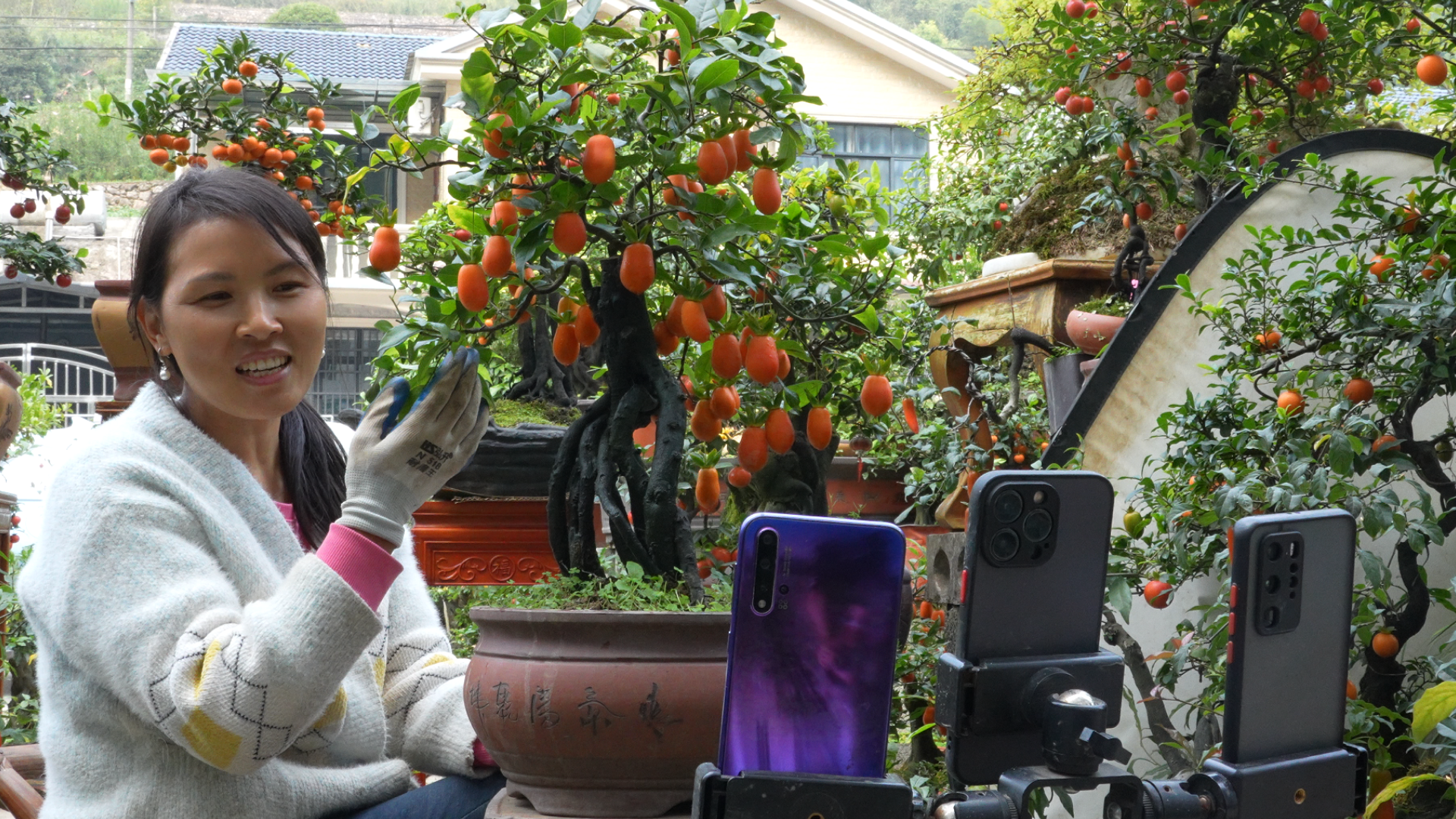Bonsai business blossoms in Changyang
2024-11-22 20:11:00
By Yan Wanqin. Jiang Qingping, Tian Yamin, Liu Die also contributed to this article.
Gaojiayan Town in Changyang Tujia Autonomous County has experienced a recent boom in the long running bonsai tree industry. These new developments are leading villagers on the path to wealth.
In recent years, many farmers have turned to live broadcasts and engaged heavily in e-commerce.
Bonsai sales have multiplied, with this year's sales volume exceeding 150 million yuan, according to Xiang Yiting, president of the Gaojiayan Bonsai Industry Association.
"This is a Jindanzi bonsai tree, just starting to change color. It’s available to order if you like” said Han Rongyan, a livestreaming host in Gaojiayan Town. She showed the tree she had grown to the camera while interacting with her online viewers. An order was quickly placed.
Gaojiayan Town in Changyang Tujia Autonomous County has experienced a recent boom in the long running bonsai tree industry. These new developments are leading villagers on the path to wealth.
In recent years, many farmers have turned to live broadcasts and engaged heavily in e-commerce.
Bonsai sales have multiplied, with this year's sales volume exceeding 150 million yuan, according to Xiang Yiting, president of the Gaojiayan Bonsai Industry Association.
"This is a Jindanzi bonsai tree, just starting to change color. It’s available to order if you like” said Han Rongyan, a livestreaming host in Gaojiayan Town. She showed the tree she had grown to the camera while interacting with her online viewers. An order was quickly placed.

Livestreaming host Han Rongyan promoting and selling her bonsai products.
This is the fifth year that Han has sold bonsais through livestreaming, earning more than 200,000 yuan (US$27,596).
Han's success is part of a larger trend in Gaojiayan, where many villagers have transitioned from not only being traditional craftsmen but also livestreaming hosts.
Li Changlong, a villager in Gaojiayan Town, has been making bonsai trees for more than 30 years. He still remembers the first time he sold bonsai products online eight years ago.
"When the live broadcast began, a dozen pots of bonsai sold out in less than an hour at twice the wholesale price from merchants," Li said.
At first, the town mainly produced foliage and flower bonsai trees such as Distylium Chinense and crape myrtle, and its market share was limited. With the ever-changing needs of consumers, more varieties have been added.
"In the past, Distylium Chinense was also sold to Sichuan, but it was not as popular as Jindanzi, so we explored the idea of planting Jindanzis," said Li.
Jindanzi's popularity lies in its bright round fruit, which blooms in the spring and ripens in the fall. It is in short supply on the market. For this reason, the town began to cultivate Jindanzi, however, due to limitations in grafting techniques, it is difficult for the cultivated Jindanzi to gain market recognition.
To address these issues, industry associations are working with farmers to improve their skills and source raw materials nationally, rather than relying solely on local materials.
"We used to sell semi-finished products, but now we buy materials to process," Li said.
 Jindanzi bonsai trees in a bonsai garden in Gaojiayan Town.
Jindanzi bonsai trees in a bonsai garden in Gaojiayan Town.At present, the village has more than 5,000 mu of plant nurseries growing bonsai plants. About 1,500 households are involved in bonsai production, providing employment for 5,000 people. Annual bonsai sales have reached 30,000.






